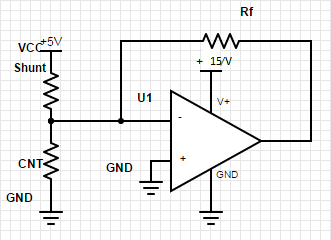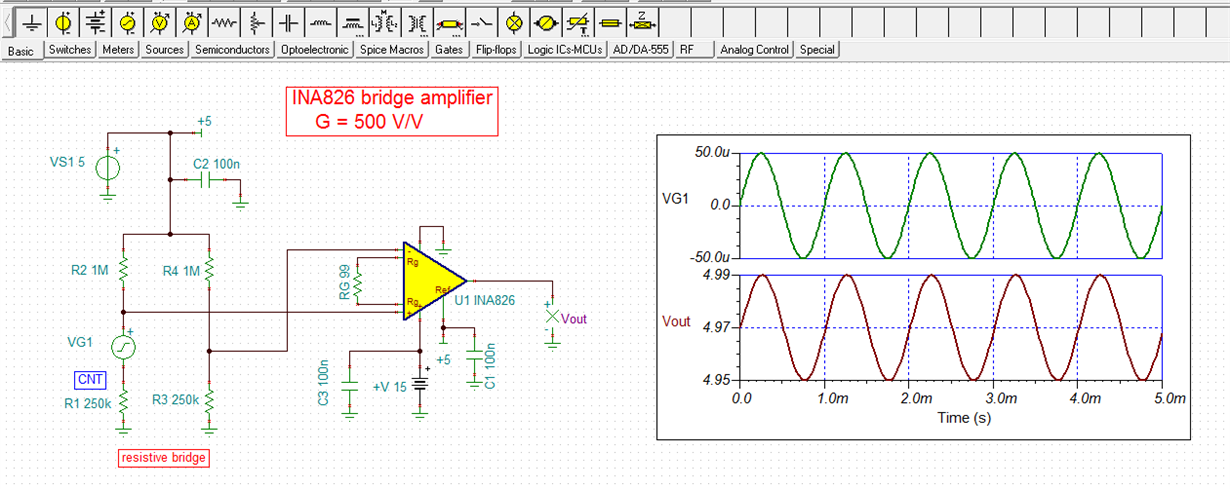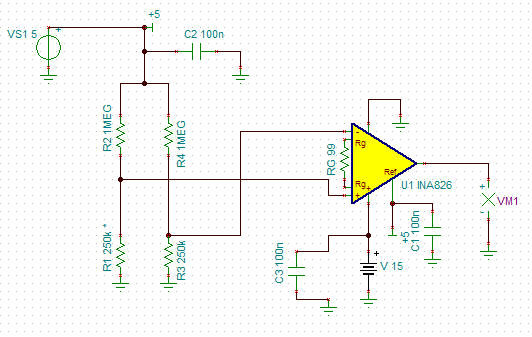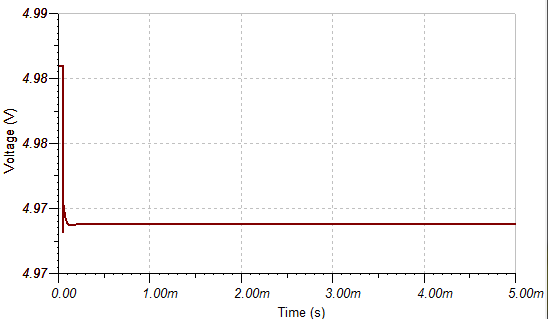I am trying to use a gas sensor. It is a chemi-resistor. Its resistance changes when it comes in contact with any of the gas. I want to read the voltage change when the sensor comes into contact with the UV light. The voltage change is in order of 50 micro volt. Which amplifier should I use so that the micro-controller can read this change?
This is my circuit, CNT is the carbon nano tube gas sensor. I am measuring the current across the shunt, the same current will be flowing across the CNT. Opamp out will give me the voltage across the CNT and using ohms law I can measure the CNT resistance.
Please help me with the amplifier circuit.







